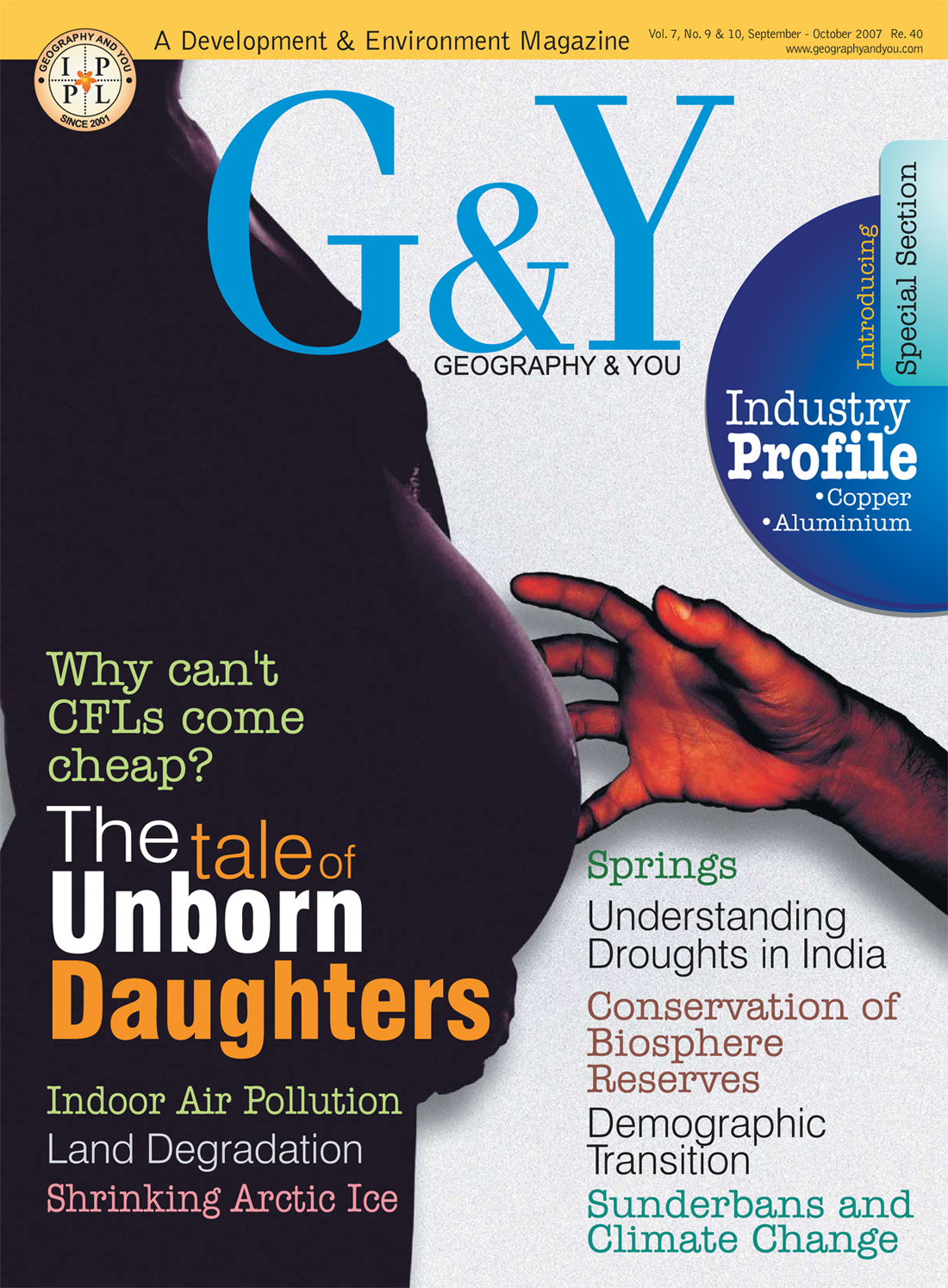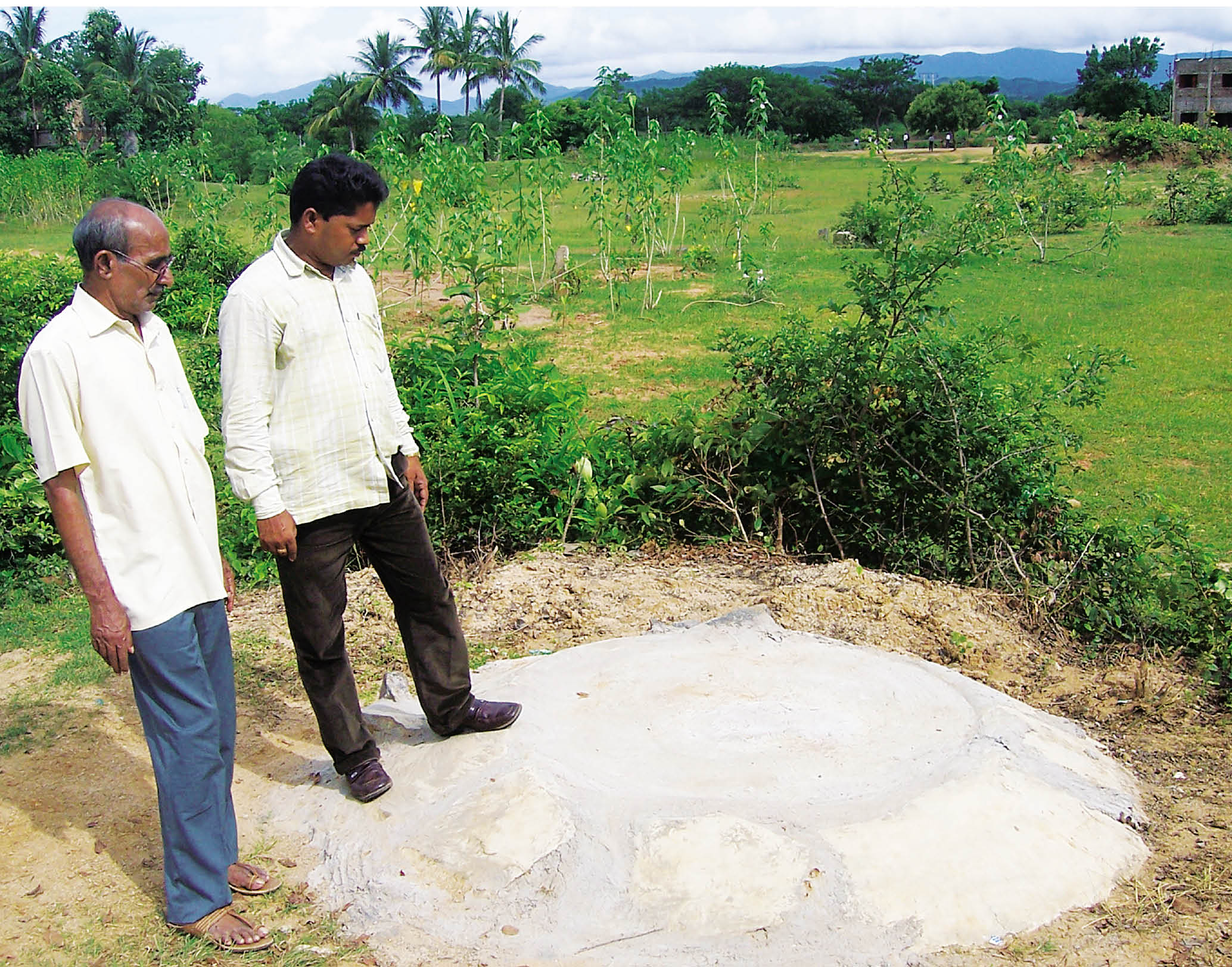
Inside this issue
Female foeticide
Aided and abetted by unscrupulous medical practitioners, female foeticide has increased alarmingly over the years. And the backyards of prominent urban centres are transforming into a veritable haven for such activities. The retrieval of hundreds of packets of dumped infant body parts from the small town of Nayagarh, has brought to the fore how brazenly the practice of female foeticide flourishes in the state of Orissa. It now appears that Nayagarh was the hub of illegal abortion in the area with people using the dubious facilities offered for termination of unwanted female foetuses.
Water Year 2007
How does one define development? In simple terms development should entail the meeting of today’s needs without compromising on the ability of future generations to meet their own needs. Water forms an integral part of our environment, a resource that our survival is linked with - but water regrettably remains the most abused.
Widespread air pollution around the world has caused global warming which in turn endangers the life of human and animal species. A great deal of attention has been awarded in understanding the dynamics of air pollution to mitigate its adverse reactions. Also the problem has been widely discussed by eminent scholars, with a whole lot of texts in the form of books, journals, articles being made available. Yet, unfortunately little attention has been paid towards protecting humans from indoor air pollution – the space he calls his home, factory, office or car and spends almost eighty to ninety percent of his time.
Drought is a normal climatic phenomenon that occurs in all climatic zones, but its intensity and frequency usually increases towards drier climatic zones. In weather terms, drought occurs when rainfall received is a certain percentage lower than the long term average for the area. Drought is not a disaster in the sense an earthquake, a cyclone, or a landslide is, because it does not strike with that suddenness, yet, it is a calamity that spreads slowly over a wide area, affecting the two basic production systems for survival: food and water, and thus impairing the livelihood of the affected people. Impact of drought gets cascaded when it occurs in consecutive years. Data compiled from 107 countries suggest that on an average 220 million people are globally exposed to drought per annum, the maximum vulnerability being occurring in sub Saharan Africa.
Pollution Watch
From the actual historical experience of a number of European countries and the United States of America some scholars have inferred that populations historically pass through different more or less well-defined stages in terms of their levels of fertility and mortality. Developed as an attempt to formulate a generalised explanation of the process of mortality and fertility decline in those countries, the transition theory was elaborated and received a much broader interpretation in more recent decades, when it was thought to be applicable also to the less developed countries that are still in the early stages of demographic change.
Wildlife-Biodiversity
Biosphere Reserves are rich in biological and cultural diversity and encompass unique features of exceptionally pristine nature. The goal of the Ministry of Environment and Forests (MoEF) is to facilitate conservation of representative landscapes and their immense biological diversity and cultural heritage, foster economic and human development which is culturally and ecologically sustainable and to provide support for research, monitoring, education and information exchange. The scheme is a pioneering effort at pursuing the increasingly difficult yet urgent task of conserving ecological diversity under mounting pressures.
Arctic sea ice during the 2007 melt season plummeted to the lowest levels since satellite measurements began in 1979.
First Person
Drift through any prominent do’s of the city and pose a few CFL questions to the elite and environment conscious. Watch the proud smile spreading across their faces claiming they use only compact fluorescent lights as it can save the world from greenhouse gas emissions. The link no doubt is well established and the rich and famous have found a new expensive toy to show off how aware and concerned they are about the future of the earth. But with a rising inequality in incomes, poor India can barely afford a light bulb let alone a CFL. Starting at about Rs. 100 for standard illumination requirement, for almost all branded CFL, it is way beyond the Rs 10 that a two-square-meal-earning citizen dish out for an edisonian bulb. If we are so sure that the energy efficient CFL will translate into substantial energy savings and bring down emissions levels then we should address its pricing regiment so that every Indian is able to afford a CFL without debt pangs.
Loose and friable nature of soil, steep slopes and undulating terrain, faulty agricultural practices, reckless cutting and removal of trees, uncontrolled grazing and other adverse biotic factors have aggravated the problem leading to erosion, rain cuts and formation of gullies and ravines. These have done immense damage to fertile cultivable land and irreparable loss of topsoil.
Copper production in India: The copper production in India is about 3.6 to 4 lakh TPA. The per capita consumption of copper is about 400 gms as against world average of 3 kgs and North America’s 15 kgs. Due to the increase in use of copper in different fields, the consumption of copper in India is increasing. Copper production too has risen considerably after 1996 with many smelting units increasing their capacity.
As you pledge to conserve fossil fuels and ban Styrofoam cups at home to help conserve our natural habitat, spare a thought for the refugees of the inhabited islands in the world that are being submerged by the rising seas - a result of global warming. Called climactic refugees, these families of engulfed Lohachara Island in the Sunderbans now live in makeshift homes on neighbouring islands.
The aluminium industry in India is gearing up to face new challenges with purpose and direction. The country’s rich bauxite mineral base has the potential to gain competitive advantage in the industry globally. The aluminium industry in India has grown over six decades since the establishment of the first manufacturing company i.e. Indian Aluminium Company (INDAL) in 1938. All business activities of INDAL have been merged into HINDALCO, with the exception of its foil unit at Kollur. National Aluminium Company Ltd. (NALCO), a public sector enterprise of the Government of India, is the largest integrated aluminium complex in Asia.

